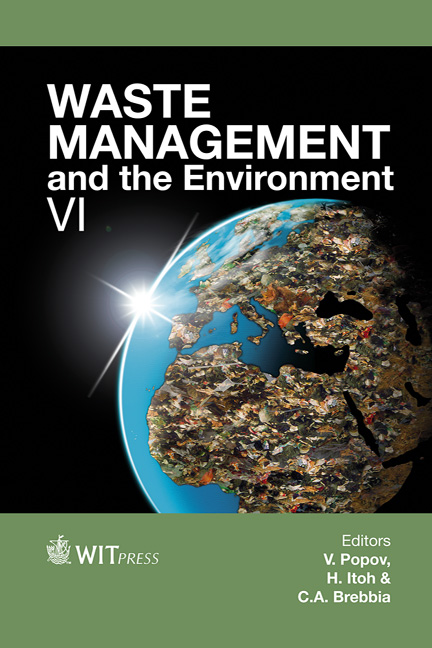Process Simulation And Sensitivity Analysis Of Waste Plastics Gasification In A Fluidized Bed Reactor
Price
Free (open access)
Transaction
Volume
163
Pages
10
Page Range
177 - 186
Published
2012
Size
725 kb
Paper DOI
10.2495/WM120171
Copyright
WIT Press
Author(s)
P. Kannan, A. Al Shoaibi & C. Srinivasakannan
Abstract
This paper presents a simplified process simulation model of typical waste polyethylene gasification in a fluidized bed reactor using Aspen Plus. The proposed model incorporates both physical and chemical processes, including drying, pyrolysis, combustion and gasification, by using various inbuilt modules to predict the resulting product gas composition and temperature. A detailed sensitivity analysis investigating the effects of various process parameters, including equivalence ratio, bed height, and steam/fuel ratio has been presented. Keywords: gasification, waste LDPE, aspen plus, modelling and simulation. 1 Introduction Gasification in commercial scale is practiced based on batch, semi batch and continuous modes of operation depending upon the processing capacity of the plant. Typically a plant processing large throughput utilize fluidized beds due to the advantages such as enhanced gas-solid contact, excellent mixing characteristics [1], operating flexibility [2], and ease of solids handling [3] that lead to a better overall gasification efficiency. Although there are many different types of fluidized beds available for gasification and combustion, bubbling fluidized type is the most preferred type whenever steam is used as a gasifying medium [4]. In general the process of gasification for energy extraction from solid carbon source involve three simultaneous or competing reactions namely combustion, pyrolysis and gasification. The partial combustion of solid fuel creates an oxygen devoid, high temperature condition within the reactor which promotes the
Keywords
gasification, waste LDPE, aspen plus, modelling and simulation.





